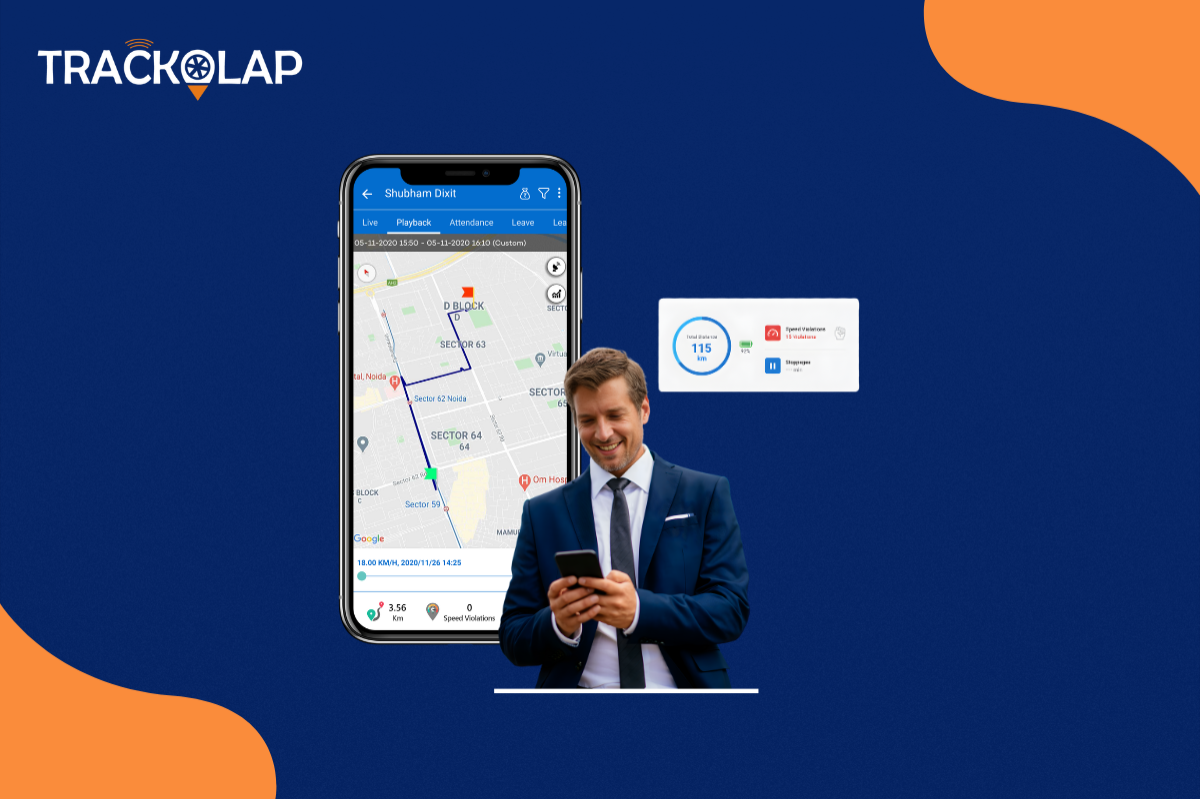
Why Companies Replaced Managers with Coaches: A Complete Guide
In the ever-evolving landscape of modern workplaces, companies are constantly searching for innovative ways as well as automated Business automation tools like TrackOlap to enhance productivity and foster a positive work environment.
Amid the recession and constant layoffs, a crisis is unfolding in workplaces worldwide, with serious implications for employee engagement.
Gallup's annual survey has revealed that employee engagement has reached its lowest point in seven years. Shockingly, only a third of workers feel genuinely engaged, while a concerning 18% consider themselves "actively disengaged."
Gallup's comprehensive measurement of engagement takes into account several critical factors, such as clear expectations, growth opportunities, alignment with the company's purpose, leveraging individual strengths, and a sense of care within the workplace. Unfortunately, these elements have experienced a significant decline.
This decline in engagement gained momentum in 2021, a year marked by the emergence of the term "great resignation" to describe the mass departure of dissatisfied employees.
Research conducted by McKinsey indicates that the primary drivers of this phenomenon were employees feeling undervalued by their organization (54%) or their managers (52%), as well as a lack of belonging (51%).
Even those who choose to remain in their roles exhibit reduced productivity, leading to the emergence of the concept of "quiet quitters" who merely meet the minimum job requirements.
It is evident that urgent action is required to address this crisis and restore employee engagement in workplaces globally.
On the other hand, in recent years, there has been a growing trend in some companies to replace traditional managers with coaches to enhance employee productivity and happiness at work.
This shift is based on the belief that coaching can be a more effective approach to supporting employee development and fostering a positive work environment.
The role of our coaches is crystal clear: to maximize the productivity of our employees and help them achieve their full potential.
With the help of an employee tracking app like TackOlap, they can provide close mentoring and feedback, encouraging individuals to identify their preferred work methods while ensuring they receive the necessary training and support for professional growth.
While coaches, like managers, are readily available to address challenges, their focus is on empowering and supporting employees to forge their own path forward instead of dictating from above.
In this blog post, we will explore how the companies transformed their management structure with business automation tools, the benefits it yielded, and the implications it holds for the future of work and careers.
Additionally, we will also discuss how employee tracking tools can complement the coaching model and provide valuable insights for optimizing performance.
Redefining the Traditional Hierarchy:
Traditionally, managers have held the responsibility of overseeing their team's performance, assigning tasks, and making key decisions. However, the companies recognized the limitations of this approach and sought a more collaborative and empowering alternative.
They introduced a system where employees were assigned individual coaches instead of managers. These coaches focused on providing guidance, support, and professional development to their assigned team members.
Empowering Employees through Coaching:
Coaching places a strong emphasis on empowering individuals to take ownership of their work and personal growth. Instead of simply delegating tasks, coaches engage in open dialogues with employees, helping them set meaningful goals and develop strategies to achieve them.
This approach promotes autonomy and accountability among employees, fostering a sense of purpose and motivation in their work.
Nurturing a Culture of Continuous Learning:
One of the significant benefits of the coaching model is its dedication to fostering a culture of continuous learning. Coaches actively identify and address skill gaps, offer personalized training, and provide resources to enhance employees' professional development.
This emphasis on learning and growth not only improves individual performance but also contributes to the overall progress and success of the organization.
Enhancing Communication and Collaboration:
Communication is a critical element in any workplace, and the coaching model places great importance on fostering open lines of communication. Coaches serve as facilitators, encouraging dialogue, active listening, and constructive feedback among team members.
This approach enhances collaboration, strengthens relationships, and enables teams to work more efficiently and harmoniously.
The Impact on Productivity and Job Satisfaction:
The shift from managers to coaches has had a remarkable impact on both productivity and job satisfaction within the company. By empowering employees and focusing on their individual growth, the coaching model has significantly increased productivity levels.
Employees feel more motivated and engaged, leading to higher quality work and improved outcomes. Moreover, the shift has also resulted in higher job satisfaction, as employees feel valued, supported, and heard in their professional journeys.
According to our client’s internal data, since implementing the coaching model, they have witnessed a substantial increase in productivity.
Quarterly performance metrics indicate a 30% rise in overall team output compared to the previous year when traditional managers were in place.
This increase can be attributed to the coaching model's focus on individual development, goal setting, and personalized support, which have all contributed to employees performing at their best.
Moreover, job satisfaction levels have soared since the transition to the coaching model. This increase in job satisfaction can be attributed to the personalized attention and support provided by coaches, as well as the emphasis on continuous learning and growth.
These statistics not only highlight the positive impact of the coaching model on productivity but also demonstrate the importance of employee satisfaction in driving overall success within the organization.
By prioritizing employee well-being and fostering a supportive work environment, the company has not only achieved higher productivity but also created a positive and fulfilling workplace culture.
The Role of Employee Tracking Tools:
While coaching plays a pivotal role in optimizing performance, the integration of employee tracking tools can provide valuable insights for further improvement. These tools offer objective data on employees' work habits, time management, and performance metrics.
By analyzing this data, coaches can identify areas where employees excel and areas where additional support may be needed. Employee tracking tools like TrackOlap can enhance the coaching process by providing a comprehensive view of each individual's strengths, weaknesses, and progress.
Our recent studies have shown that companies that implemented coaching programs and employee monitoring software experienced an average increase in productivity of 20%.
Additionally, job satisfaction levels rose by 25%, indicating a higher level of engagement and fulfillment among employees. These statistics highlight the effectiveness of coaching as a management approach that benefits both individuals and organizations.
In the last few years, TrackOlap helped coaches gain objective insights into employees' work habits, time management, and performance metrics.
They can track key performance indicators (KPIs) such as task completion rates, project timelines, and overall productivity levels. This data allows coaches to identify areas where employees excel and recognize their strengths, providing opportunities for recognition and further development.
Furthermore, our employee tracking software can also pinpoint areas where employees may need additional support or improvement.
For example, it can highlight time management challenges or recurring bottlenecks in workflow processes. Armed with this information, coaches can offer targeted guidance and resources to help employees overcome obstacles and maximize their efficiency.
Furthermore, it also facilitates ongoing performance tracking and progress monitoring. Coaches can set goals and milestones in collaboration with employees, and we enable real-time monitoring of progress toward these objectives.
This visibility promotes accountability and allows coaches to provide timely feedback, celebrate achievements, and identify areas for improvement.
Final Thoughts
We witness the triumph of the companies that dare to replace managers with coaches. Their audacious decision has unleashed a torrent of productivity and unbounded joy, reshaping the very fabric of work itself.
In this ever-evolving symphony where employee well-being harmonizes with professional prosperity, embracing alternative management structures—such as the coaching model—offers a glimpse into an enlightened future.
The alarming statistics and research findings highlight the urgent need for organizations to prioritize and improve employee engagement. Failing to address this crisis can lead to increased turnover, decreased productivity, and a negative impact on overall organizational performance.
Let's unlock the true potential of this coaching model with us. Reach out to our team of experts to learn more about implementing coaching model-oriented employee tracking tools and revolutionizing your workplace.
Together, let's orchestrate a future where productivity soars and employees thrive in an atmosphere of fulfillment and growth.






























 Back to Blogs
Back to Blogs










 D-5 Sector-59, Noida, Uttar Pradesh (India)
D-5 Sector-59, Noida, Uttar Pradesh (India) contactus@trackolap.com
contactus@trackolap.com 7011494501
7011494501










